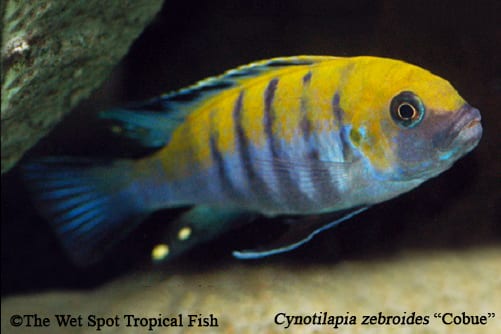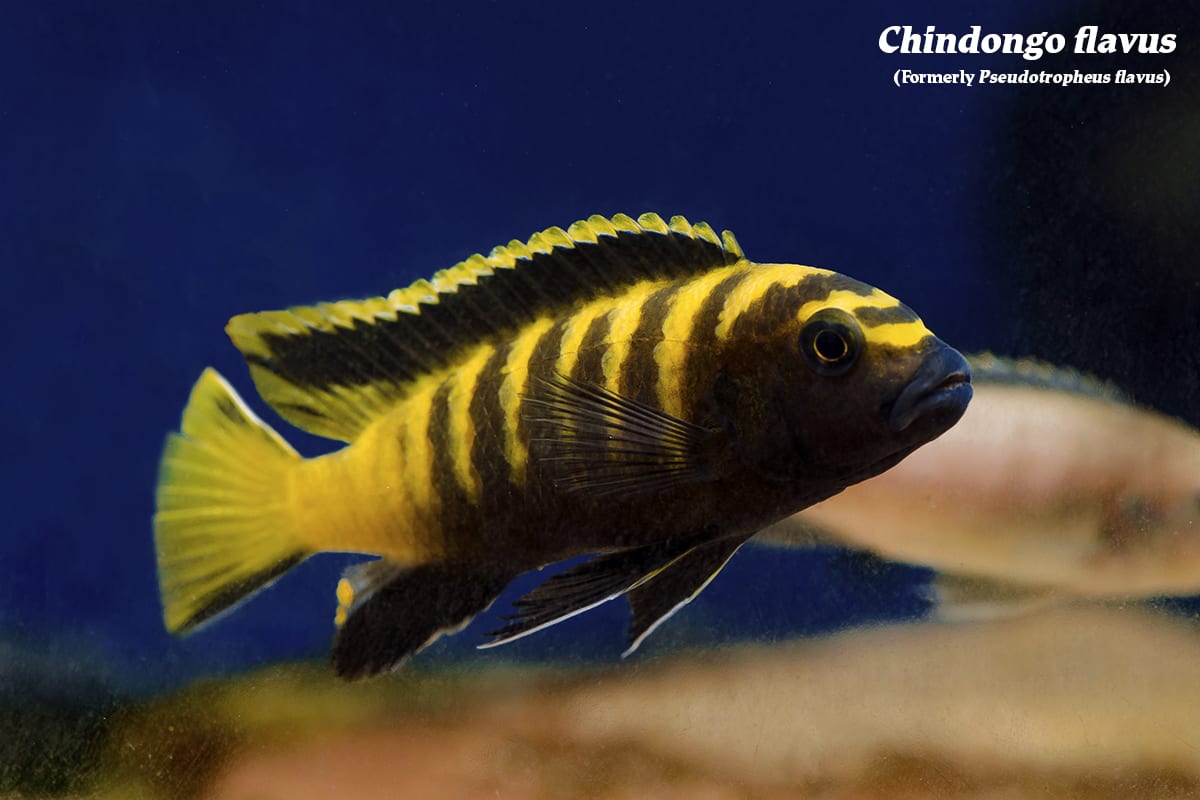Wowee Malawi
Wowee Malawi
Share on facebook
Share on twitter
Share on reddit
Share on pinterest
We all know Lake Malawi is big, but wrapping our heads around its very real massiveness is a difficult task, especially since most of us struggle to clearly picture more than 10 items in our heads at once. Clocking in at an incomprehensibly large 8,400 km3 in volume, only 12 swimmers have ever made it across Lake Malawi’s 25 km (the fastest making it in a breakneck 9 hours!). Anyhoo, it’s no wonder the lake has been an ideal case study for evolutionary radiation. The lake is home to 700 described (1,000 estimated) cichlids, who, all within the same body of water, have speciated, rarely coming back in contact to interbreed. Even cichlids of the same species can have extremely distinctive looking morphs based on their locale. Of all the stunning and unique Malawi cichlids we work with, these three Mbuna really stand out: Labidochromis sp. “Mbamba”, Cynotilapia zebroides “Cobue”, and Chindongo (Formerly) Pseudotropheus flavus.
Scientific NameLabidochromis sp. “Mbamba”
Common NameYellow Top Labidochromis
Temperature / pH76-82°F / 7.8 to 8.5 pH
Native LocationMbamba Bay, Tanzania
Preferred DietPrepared foods, invertebrates
An underrated Malawi ‘lab’ compared to its “perlmutt”, and caeruleus cousins, L. sp. “Mbamba” is a gorgeous and active Mbuna collected from Mbamba Bay. Males are territorial and form dominance hierarchies, with the top dog showing his colors by about 2 months in age. Reaching a max size of 4 inches, males are light blue with dark vertical striping from their nose about to halfway down their sides, and have yellow-edged caudal and dorsal fins. As you might expect, females are more drab in coloration with pinkish-brown coloration, light striping, and yellowish fins. Right in the middle-of-the-pack with regards to aggression, males will chase similar species away from their territories, but will not show constant harassment. Tanks should be large and furnished with scattered rock piles to form multiple territorial zones over sandy substrate. An ideal addition to the well-researched mbuna tank, they should be kept with a female-biased sex ratio alongside other Mbuna of similar size and temperament. Generalist omnivores by nature, they tend to eat soft aquarium plants if given the chance, and a balanced diet includes small live and frozen invertebrates and high-quality cichlid pellets, flake, and dried foods with vegetal component. Waters should be maintained with temperatures between 76 and 82°F and pH of 7.8 to 8.5.
Scientific NameCynotilapia zebroides “Cobue”
Common NameOrange Back Cichlid
Temperature / pH76-82°F / 7.8 to 8.5 pH
Native LocationCobue, Mozambique
Preferred DietPrepared foods, Spirulina
Found off the rocky shorelines of Cobue, Mozambique Cynotilapia zebroides “Cobue” is a beautiful, dwarf Mbuna. Reaching just 3 inches, males have bright blue underbellies, yellow backs, dark blue banding, and spotted anal fins, while females tend to be brownish in coloration with yellow-edged fins. Another species suited for the “overcrowded” Mbuna tank, they do best in tanks with sandy bottoms and scattered rock piles, where they spend much of their time in the resulting cave networks. They do, however, have active spells, and open swimming space is required. Another omnivore, they should be given regular live and frozen offerings in addition to high-quality cichlid foods with some green component like spirulina or spinach. Showing a preference for hard waters, tanks should be kept with temperatures of 76 to 82°F with a pH between 7.8 and 8.5.
Scientific NameChindongo flavus
Common NameDinghani Cichlid
Temperature / pH76-82°F / 7.8 to 8.5 pH
Native LocationChinyankwazi Island, Malawi
Preferred DietVegetal matter, invertebrates
Recorded exclusively from Chinyankwazi Island in Malawi (yes, Malawi has islands!), C. flavus (Formerly Pseudotropheus flavus) is another stunning yellow and black Mbuna. Reaching about 3.5 inches in length, males have yellow backs, caudal fins, and striping on their heads with light blue underbellies and faint black-gray banding. This species also thrives in crowded Mbuna setups with rock piles and open swimming space, and will stake out and defend territories from similar species. Ideally, only 1 male will be kept in a single space, unless the tank is quite large. This cichlid is omnivorous leaning on the side of herbivorism, and should be fed mostly greenery like spirulina, spinach, nori, and veggie flake with supplementation of live and frozen invertebrates. Tank waters should be kept with temperatures around 76 to 82°F and pH of 7.8 to 8.5.
Of even the greatest cichlid lovers among us, most will never get the chance to behold the grandeur of Malawi themselves, and will have to settle for anecdotes relating its scale. Nevertheless, keeping aquaria full of its diverse cichlid inhabitants conveys the beauty and wonder that is this African Great Lake.


